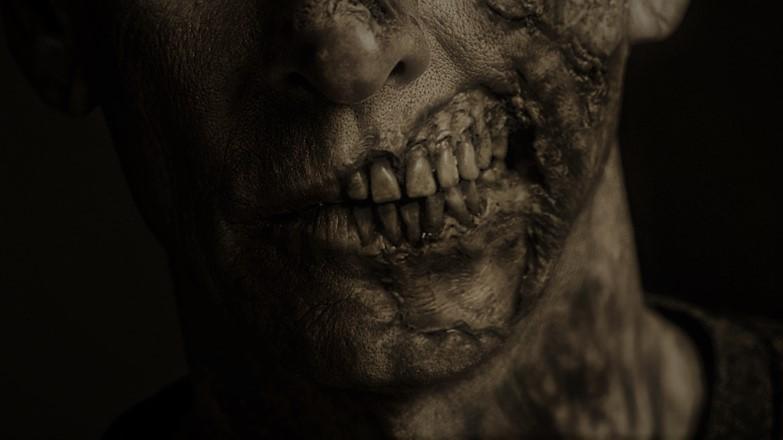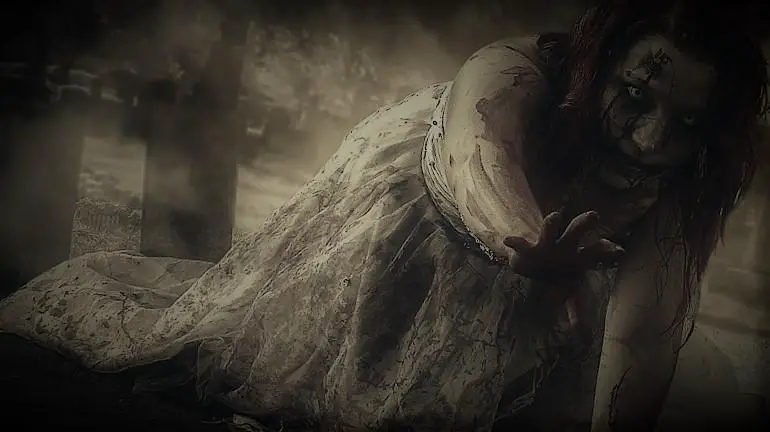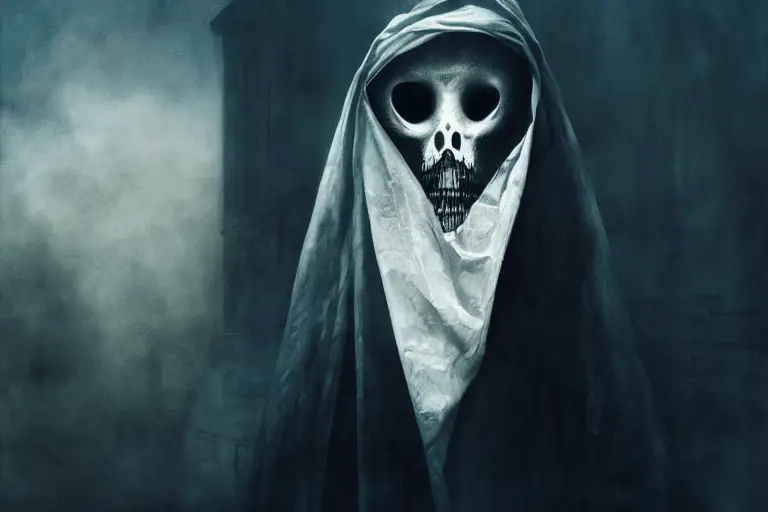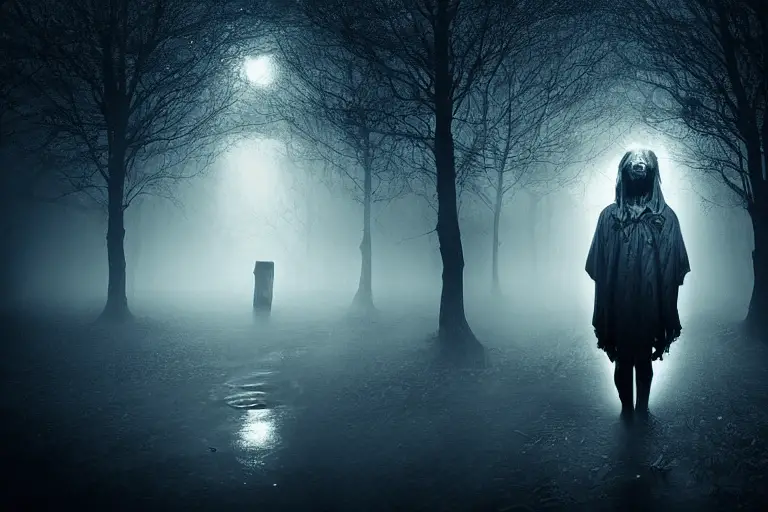Share the Lore!
By: Alex Postrado
The Monster Born Of Ireland’s Most Horrific Period
Auguries of bad luck have existed in various cultures and folklore since time immemorial.
These creatures take on different forms but share one common purpose: to serve as an omen of misfortune — and sometimes, even death.
In Irish mythology, such an omen is the Fear Gorta — a zombie-like creature feared by many.
Taking the shape of a starving, emaciated person — the Fear Gorta roams the Irish hillsides, begging people for alms.
Though commonly tagged as a precursor of tragedy, a run-in with the Fear Gorta — according to the lore — can actually bring double-edged consequences.
The personification of hunger itself, what else do we know about the Fear Gorta?
What is the Fear Gorta?
With roots tied to Irish mythology, Fear Gorta are bodies of neglected corpses — typically of poor people — that have risen from their graves.
Reminiscent of the archetypal zombie, they are also described to have rotten flesh, held together by patches of decaying skin.
However, their similarities end there.
Instead of craving for flesh like zombies, the Fear Gorta wanders parts of the countryside — rags tied around its waist and alms cup in hand — seeking help from passers-by.
In the most basic sense, they are beggars in search of food, money, or handouts — anything that might extinguish the endless hunger in their stomachs.

Moreover, according to the lore, Fear Gorta are typically depicted as emaciated corpses with flesh falling off of their bodies with their every move.
Surrounding their hollow face are long and matted patches of gray or white hair, while their body reveals their thin arms, matched with their long and dirty nails.
They also don rags as clothes and — with all of these elements combined — they are the textbook representation of what death looks like.
The term, Fear Gorta, can be translated to Man of Hunger, Phantom of Hunger, and sometimes even Hungry Grass (féar gortach).
Hungry Grass — though, nowadays, considered related — is actually a separate entity, according to some.
And in this narrative, it is a plot of land covered in grass that is cursed by the fairies of the Unseelie Court.
Stories say that if you step on the Hungry Grass, you will end up starving to death — no matter how much you eat!
A particularly different take on the Fear Gorta story.
But, with time, the lore of the Hungry Grass and the Fear Gorta gradually became interconnected and difficult to differentiate.
Due to this, some accounts describe the Fear Gorta as the undead corpse of a person who passed away and was left on the ground without a proper burial.
It is said that if grass were to sprout over the body, then it would turn into the Fear Gorta.
Despite the confusion, though, it appears like it would be best to keep off the Hungry Grass if you ever see one. Better safe than sorry!
Are Fear Gorta Good or Evil?
Meeting the Fear Gorta is an encounter where elements of both good and evil are in play.
Though they don’t share many similarities with other benevolent creatures when it comes to appearance, some stories tell of the scarring encounter with the Fear Gorta possibly leading to something favorable.
Much like other entities that are known to bring both good and bad karma — they regard people depending on how they are treated.
Good fortune to those who are generous.
And rotten luck to those who snub them.
Distinctively known to be seeking alms from passers-by, they reward those that are unselfish with luck and prosperity.
On the other hand, those who turn away from the needy creature are punished with dreadful curses.
Anyone unfortunate enough to receive the curse of the Fear Gorta was said to suffer grave misfortune — sometimes even leading to famine.
Moreover, anyone who tries to attack them — though that already doesn’t sound like the best idea — would be met with warranted violence from the creature.
Now, that is a situation you definitely don’t want to be in!
Despite their frail and weak appearance, the Fear Gorta can still inflict sizeable damage to whoever is aggressive towards them.

Harrowing Origins of the Phantom of Hunger
Some may argue that folklore is an amalgamation of history, as well as belief in the supernatural. And I’m not one to disagree.
History has — time and time again — proven its influence in shaping the lore and beliefs in most cultures.
In Ireland, for instance, the Fear Gorta is — as they say — the perfect metaphor, for what people experienced during the Irish Potato Famine.
Potatoes were introduced to Ireland in the 18th century. And by the 19th century, it was already a food staple for impoverished families.
The reason for this was its price. Potatoes are cheap and easy to grow — which immensely helped get people through the harsh winters.
In 1845, Ireland’s darkest era began.
It was the year that the potato blight, a fungus-like microorganism — scientifically named Phytophthora infestans — spread and infected crops in Irish countrysides and farmlands.
This triggered the Irish Potato Famine — lasting seven dreadful years.
The period brought mass starvation, extreme poverty, and disease to the already poor people that have long been suffering under oppressive British rule.
Corn Laws were also still in practice at the time — which placed an “artificially high tariff on imports” in order to maintain British control over the market.
This, along with the continued export of produce managed by British landowners and merchants ultimately brought the downfall of the entire Irish nation.
Over two million emigrated to the Northern regions of America and Great Britain in an all-or-nothing attempt at survival.
Furthermore, the death of another million men, women, and children has been recorded as a result of famine, malnutrition, and the diseases associated with it.

With such a colossal catastrophe at hand, the remainder of the country was understandably overwhelmed with grief.
As a result of the fast-growing mortality rate, accounts say that the bodies of the dead were hauled off to carts and placed on top of one another — eventually turned into mass makeshift graves without a proper blessing, much less, burial.
Mass graves — despite being unconsecrated at the time — were eventually memorialized.
However, some of the graves were inevitably left unmarked and forgotten — the cries of hunger, drowned out by several feet of earth above them.
With all the horrors brought by the harrowing famine, there is no question why it gave birth to the striking tale of the Fear Gorta.
Symbolizing the darkest times of Ireland and serving as an undying reminder to always lend a helping hand to those in need.
Of course, unless you want to find yourself face to face with a rotting corpse ready to curse you with misfortune or eternal starvation.
References:
Fear Gorta Fear Gorta –Irish “Good Luck” Zombies The Irish Great Hunger And The Rise Of The Fear Gorta The Fear Gorta - When Hunger Knocks Great Famine - Ireland

